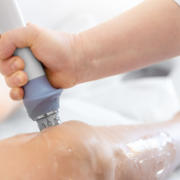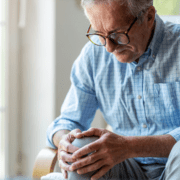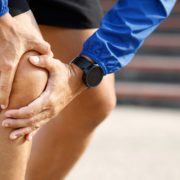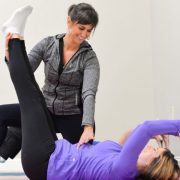What is Shockwave Therapy and Should You Consider it?
What is Shockwave Therapy and Should You Consider it?
If you’ve been reading my articles for awhile – you’ll know that I’m generally not a huge fan of passive modalities – especially when used in isolation. However, every now and then one comes along that grabs my attention. A few months ago – Shockwave Therapy treatment did just that – so I started doing my research…
Shockwave Therapy is a revolutionary, non-invasive treatment protocol that utilizes high-energy acoustic (sound) waves to treat chronic musculoskeletal pain conditions, as well as soft tissue/sports-related injuries. To give you an idea of how powerful it is – it was initially used by urologists to treat and break up kidney stones. Over the last few years, the orthopedics and sports medicine practitioners have started to apply the technology in their respective fields, and are happy with the results.
So what is Shockwave Therapy and how does it work?
Shockwave therapy – otherwise known by its technical name of Extracorporeal Shock Wave Therapy (ESWT) – utilizes high-energy “shock waves”. These Sound-waves promote and accelerate the body’s own natural healing process. When the shockwave treatment is applied, there is a transference of energy from the shockwaves into the targeted tissue area. This triggers a biological response that helps to aid and accelerate the healing process. The biological responses include stimulation of cell regeneration, improved blood flow, and formulation of new blood vessels (neovascularization). All are designed to speed up soft tissue healing and provide relief from pain. Some folks feel pain relief right away, for others it takes a few sessions.
Research is still being done to evaluate the full effectiveness of shockwave therapy – but so far we are seeing really good results for persistent, chronic conditions such as plantar fasciitis, tennis elbow, patellar tendonitis (runner’s knee), and shoulder tendonitis. Anytime you have a chronic condition involving tendonitis, the treatment protocol required to get true healing and rehabilitation is highly specific and generally takes 7-9 months. You also want to avoid things like ice and anti-inflammatories because it impedes the healing process. This can be hard for a lot of folks since chronic tendonitis tends to be painful. This is one of the reasons I love Shockwave Therapy. It not only enhances the healing process of tendons and other soft tissue – but it helps to relieve pain at the same time.
Ok – now that you know a little bit more about Shockwave Therapy. Is this a treatment you should consider for yourself?
Have you been suffering from a chronic or persistent soft tissue injury or tendonitis? Are the treatments you’re currently trying not quite getting you back to 100% as fast as you’d like? Then this might be something valuable to add into the mix. It could very well be the missing link needed to give your soft tissue healing the boost required to get you over the hump you’re currently at.
Another great reason to consider trying Shockwave Therapy is that it’s very safe and completely non-invasive. It doesn’t require any kind of incision, use of anesthesia, or needle punctures such as with steroid injections. This significantly reduces the risk of any type of infection or complication after your treatment. Plus, the treatments are short. They only last about 15-20 min to get significant pain relief and powerful tissue healing.
The last thing I’ll say about Shockwave Therapy is that although it’s very safe and designed to reduce pain, there can be some short-term pain and discomfort associated with this treatment. As well as temporary skin redness and minor swelling. For those with extremely low pain tolerance, this treatment can take some getting used to. Shockwave Therapy is also very noisy. The treatment is administered through a handheld device that pulses and makes a noise throughout the duration of your session. That – combined with potential temporary pain/discomfort – causes some to shy away from giving Shockwave Therapy treatment a try. But luckily the treatments are short, so it makes these minor adverse side effects more tolerable.
So, if you haven’t yet heard of Shockwave Therapy, hopefully this helps you have a better understanding of what it is.
And most importantly, decide for yourself if it’s something worth considering. Especially if you’ve been suffering with a persistent soft tissue or tendon injury for quite some time. While it’s not a miracle cure by any means, I have seen fantastic results since beginning to incorporate this technology into my own practice. I like it because there’s a lot of scientific evidence to support its efficacy. Plus it’s a safe, non-invasive alternative to so many other pain-relief techniques that is designed to leverage the body’s own natural healing response.
Dr. Carrie Jose, Physical Therapist and Pilates expert, owns CJ Physical Therapy & Pilates in Portsmouth and writes for Seacoast Media Group. To get in touch, or learn more about Shockwave Therapy, visit her website www.cjphysicaltherapy.com











